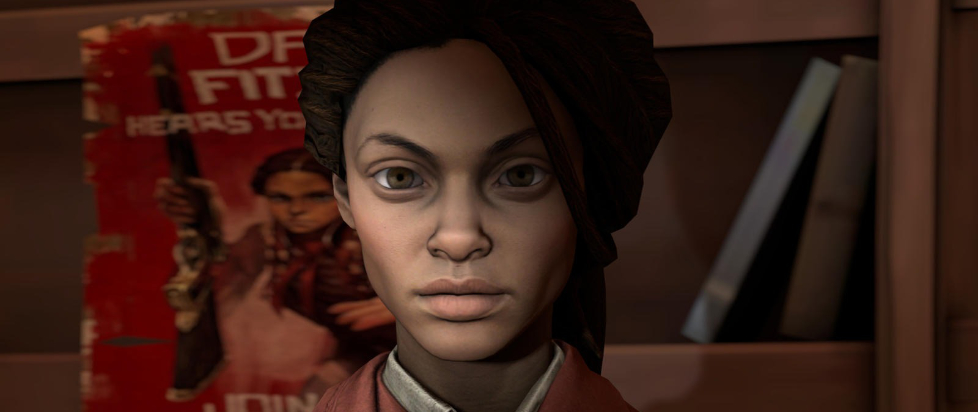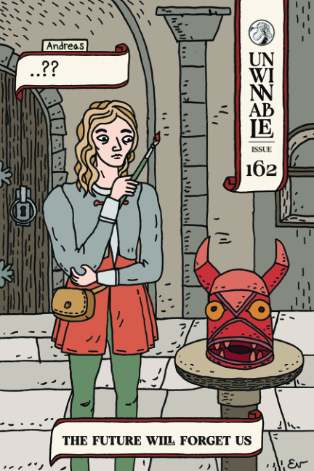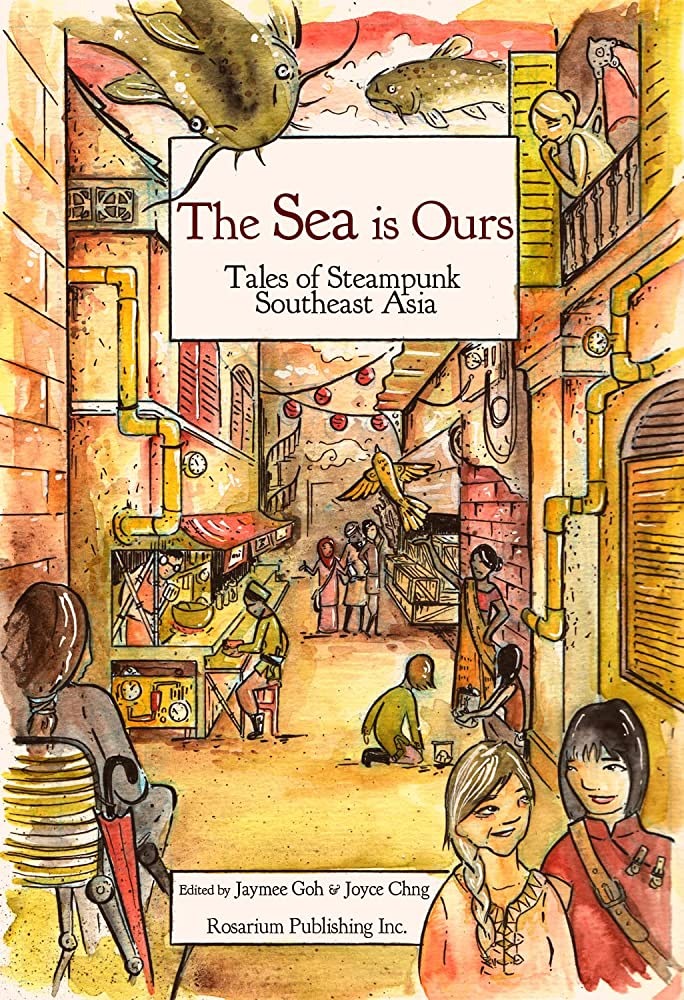
Less Punk and More Funk

This column is a reprint from Unwinnable Monthly #162. If you like what you see, grab the magazine for less than ten dollars, or subscribe and get all future magazines for half price.
———
Analyzing the digital and analog feedback loop.
———
Lately, with the recent passing of Bioshock Infinite’s 10th anniversary in March, the question on my mind is: what would a Steamfunk Daisy Fitzroy be like? Or more specifically, what would a character like Daisy have been capable of if her script in Bioshock Infinite were handled by an African American writer with a Steamfunk sensibility?
Steamfunk, for those unacquainted with the term, is best described by the co-editor of the 2013 Steamfunk! anthology, Balogun Ojetade. He describes the movement as: “not a political party or interest group, nor is it a mass fad or trend” and “can be thought of as an organized, yet informal, social entity that is oriented toward the goal of cultural and historical awareness, enrichment and appreciation through Steamfunk – a philosophy or style that combines the African and/or African American culture or approach to life with that of the steampunk philosophy and/or steampunk fiction.” I believe this definition and the decolonial fiction it creates also includes the broader African diaspora as well.
The sentiment for a non-Eurocentric steampunk or even a steampunk that doesn’t always center a western perspective of steam technology was explored by Canadian writer Amal El-Mohtar in her 2010 essay “Toward a Steampunk Without Steam” for tor.com. She noted that while steampunk has a beautiful retro-futurist philosophy, one that encapsulates “the mélange of occultism and scientific rigor” of the nineteenth century, it’s a genre and movement that’s become fixated on its outward aesthetic. An aesthetic that is often Eurocentric, both in fashion and technology. Since this essay and the publication of Steamfunk! there has been a dedicated push to represent the different ways various cultures would invent (or reinvent) technology and express a retrofuturist aesthetic.
London-born, Jamaican-American writer Maurice Broaddus has written multiple works of Steamfunk fiction. Most notable are the novella Buffalo Soldier (2017) and the novel Pimp My Airship (2019). The former describes Jamaica as “a technological rival” to the western nation of Albion in alternate history North America and the latter situates steampunk within an early 20th century zeitgeist that doesn’t ignore issues of race and class during that period. Arguably the most widely-known examples of the genre are The Dead Djinn detective series (2016 onward) and the novella The Black God’s Drums (2018), both written by P. Djèlí Clark who has previously examined fantasy’s othering subtexts in-depth.

These Steamfunk works feature characters who are confronted not just with the political climates of their day, even when revisionist history grants greater independence to those of African-descent, but with deities and creatures of African and Arabic folklore. Yoruba Orishas like Shango, Oya and Oshun feature in The Black God’s Drums and Djinn and Ifrit coexist with Egyptian citizens in The Dead Djinn series. Nisi Shawl’s Everfair (2016) speculates on how different the response to genocidal conflicts in the Belgian Congo could’ve been if that nation had developed steam technology before their oppressors.
The most recent and mainstream Steamfunk media I can think of is Jingle Jangle, a Netflix Christmas special that specifically wanted to diversify the canon of seasonal family movies. Like Black Panther and its Afrofuturism, Jingle Jangle features not just a predominant Black cast and a unique magic-science system but interweaves African culture into the musical score and more literally into the stylings of the alternate 1890s characters.
The film actually won a Black Reel award for outstanding costume design which celebrated the bold colors and textiles of West Africa and fusing them to Gilded Age dress and suit patterns. Hair textures were also styled in an authentic way and based off a mix of traditional and modern African American styles. It’s important to note that Jingle Jangle and its exuberant expressions of African diaspora also share this quality with the other texts I’ve mentioned above. Steamfunk is also about celebrating different cultures and the unique characters that can exist within a historically and culturally aware retrofuturist world. Some of the most memorable moments for me in the Dead Djinn series were the everyday ones about local restaurants or Muslim characters observing their daily prayers.

Related to the efforts to diversify steampunk, there has also been a Southeast Asian lens applied to the subculture with the anthology The Sea Is Ours (2015), co-edited by Jaymee Goh and Joyce Chng. There’s even an anthology of Canadian steampunk, Clockwork Canada (2016), which in addition to portraying a multicultural society also includes representation for those with disabilities as well.
To tie all this back to Daisy Fitzroy, the character remains a frustrating conundrum for me. I obviously count among those who feel that she deserved better in the treatment of her arc in Bioshock Infinite. But I’m not at all surprised she was handled as she was. For all the promising rhetoric and gray morality that Daisy and her Vox Populi anarchist movement seemed to represent, Daisy was never intended to be nuanced. She’s meant to be an echo of that ongoing Bioshock theme of how folk heroes are prone to becoming false prophets, extremists or both. In effect, Daisy is a race and gender-bent Atlas from the first game. Someone who believes they are against the established order, but who is in fact equally as corrupted by the power and influence they wield, even if their motives seem more just at first.
My problem with Daisy being portrayed this way, however, is that it’s more than reductive to claim that someone as oppressed as her and by extension her allies are equal to a white supremacist dictator. Unlike characters like Aveline de Grandpré of Assassin’s Creed III: Liberation fame, who was written with an intersectional perspective in mind regarding her racial heritage, Daisy is not allowed to play more than one role. While her character is meant to show that morality isn’t clear-cut when power is involved, the player character of Booker DeWitt (who is revealed to be a younger Comstock) and his daughter Elizabeth both make damning commentary about her. She is described both as Comstock by another name and the perfect equal of him, not even necessarily a foil.
Often even the best-intentioned writers in the games industry stick to a Manichean duality despite aiming for an intersectional perspective of politics in a storyline. Daisy exists as a silhouette to Comstock’s objectionable regime and she herself likens the Vox Populi’s movement to shadows and darkness throughout the game. Ultimately, she is a sacrifice made for the sake of Elizabeth’s character growth. In the episodic DLC Burial at Sea, there is some clumsy retconning done via everyone’s favorite kooky scientist twins, the Luteces, to recast Daisy’s death as noble. They even paraphrase scripture at her to inspire her with a sense of martyrdom. I noticed that the scripting for this scene was keen to let players know Daisy’s moment of madness before her death – attempting to kill Jeremiah Fink’s son – was a gaff on the writing team’s part.
Either that or more likely they think this is an effective gotcha moment, where Daisy is revealed to be a reluctant pawn, but nobody is fooled. The short story e-book Mind in Revolt, released as a prelude to Infinite, is about Daisy being interviewed by a scientific racist and the incident establishes her character as someone who is as brilliant as a white man (according to Columbia’s hierarchy) yet always chooses violence as a solution. And Burial at Sea is also the same DLC that includes Moses Lydecker, a Black man who is hired by Ryan Industries to turn a department store into a prison complex.

Daisy is animated with more care than the usual Black character pre-2020s, and unlike Aveline she’s played by Black voice actress (something the latter drew criticism for the lack of). Though these details are significant, that’s not to say she’s the most standout character in 2013 for diverse representation. That same year The Last of Us gave us Henry, Sam and Marlene (and a year later Riley). There was also Nilin, the Black biracial protagonist of Remember Me. I cannot speak for Nilin’s representation as I haven’t finished the game (though Evan Narcisse has and states she’s a positive exception), but all the rest of those characters mentioned share Daisy’s problem of being fridged for the development of white protagonists.
In Ellie’s instance, four Black characters die to develop her tragic arc. Marlene also shares a lot of parallels with Daisy, despite having more depth. She’s the leader of a (supposedly) progressive movement with the Fireflies, someone who is idolized by younger characters like Ellie who need a folk hero to keep them hopeful. But Marlene’s so fixated on saving society from the cordyceps pandemic that she’s willing to end a child’s life to find a cure. That the life of a white child is at stake in both instances is not lost on me either. Or that the primary focus in Daisy’s death scene in particular is the loss of a young white woman’s innocence.
A Steamfunk version of Daisy would allow players to see more than one side of her. Her historical context would remain, but there wouldn’t be such a nonsensical emphasis on equating her and Vox Populi’s plight to a white supremacist’s. Her revolution would also be informed by other civil rights activists of her era. Perhaps she would actually have more than one run-in with not just Booker, but Elizabeth and not just during moments of conflict. Quiet moments (akin to the famous “Will the Circle Be Unbroken” scene) that allow for trope-free interactions between two different intersections of society. Perhaps Elizabeth would gently be let down that her folk hero isn’t the paragon of morality she thought she was but would gain insight into how fucked up Columbia’s systemic oppression is. Perhaps she’d see Booker in a different light sooner as he shows little empathy for Daisy and her plight. A Steamfunk Daisy Fitzroy would let her be more than just a tragic pawn in someone else’s plot.
———
Phoenix Simms is a writer and indie narrative designer from Atlantic Canada. You can lure her out of hibernation during the winter with rare McKillip novels, Japanese stationery goods, and ornate cupcakes.




